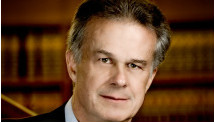After taking their exams Tuesday, Hadiya Pendleton and a group of others decided to hang out at a park on Tuesday just blocks away from their high school on the South Side.
But the trip ended in tragedy when the 15-year-old King College Prep sophomore was fatally shot about a week after she attended President Barack Obama’s inauguration and performed at inaugural events with the King College Prep band and drill team.
Penldeton and a16-year-old boy wounded in the attack were shot in a park near the school about 2:20 p.m., in the 4500 block of South Oakenwald Avenue, police said.
Most of those who were in the park were gang members, and those in the group did not stay on scene to help after the shootings, according to police. The shooting occurred around 2:20 p.m. in the 4500 block of South Oakenwald Avenue.
They boy remained in serious condition Tuesday night. He was also a student at King, according to Pendleton’s friends, though her relatives weren’t sure what school the boy attended.
One of the teens was taken in serious to critical condition to Comer Children's Hospital, according to Chicago Fire Department spokesman Will Knight.
The other victim also was taken to Comer and police at first believed both victims' conditions had stabilized by a little after 3 p.m., said Chicago Police News Affairs Officer Veejay Zala.
At Comer this evening, a group of young people sat and stood inside the entrance to the hospital's emergency room, along with the principal of King high school.
Many hugged as they brushed tears from their eyes and consoled each other and Pendleton's parents.
"She was awesome," one girl said of Pendleton outside the hospital's ER.
Friends of the slain girl said King was dismissed early today because of exams, and students went to the park on Oakenwald--something they don't usually do.
Friends said the girl was a majorette and a volleyball player, a friendly and sweet presence at King, one of the top 10 CPS selective enrollment schools. Pendleton performed with other King College students at President Barack Obama’s inaugural events.
Neighbors said students from King do hang out at Harsh Park, 4458-70 S. Oakenwald Ave., and that students were there this afternoon before the shooting took place. A group of 10 to 12 teens at the park had taken shelter under a canopy there during a rainstorm when a boy or man jumped a fence in the park, ran toward the group and opened fire, police said in a statement this evening.
The attacker then got into an auto and left the area, police said.
Neighbors reported hearing shots about 2:20 p.m.
Desiree Sanders said she heard six gunshots and called 911 after a neighbor told her that some teens had been shot. Neighbors told her as many as 10 young people had been hanging out at the small park, and most scattered after the shooting, though a few stayed behind with the victims.
Those in the group were not cooperating with police, however, and investigators had no detailed descriptions yet of either the attacker or the vehicle in which he left. Central Area detectives were investigating, and they had no one in custody as of about 8:20 p.m.
Police crime data show no serious crimes happened in the 4400 or 4500 blocks of South Oakenwald Avenue Dec. 19 to Jan. 20.
“It’s a great neighborhood. Nothing like this has happened since I’ve been here,” on the block, said Roxanne Hubbard, who has lived in the neighborhood for 19 years.
As a matter of policy, Chicago Board of Education officials refuse to confirm whether any child is a student at Chicago Public Schools because a policy on student identification passed by the board several years ago has never been implemented.
Tribune reporter Liam Ford contributed.
jmdelgado@tribune.com

